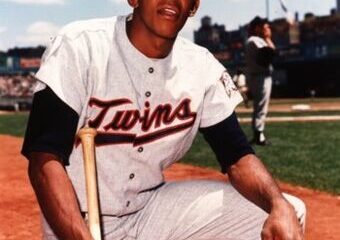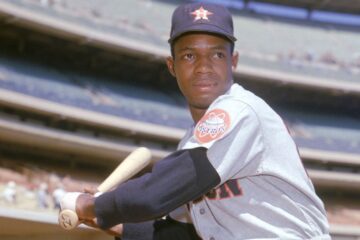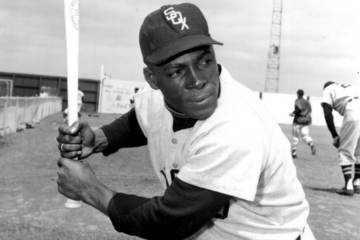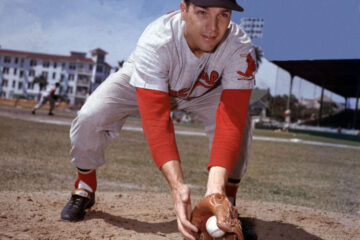The Hall of Fame Index: Who is the most valuable first baseman of all-time?
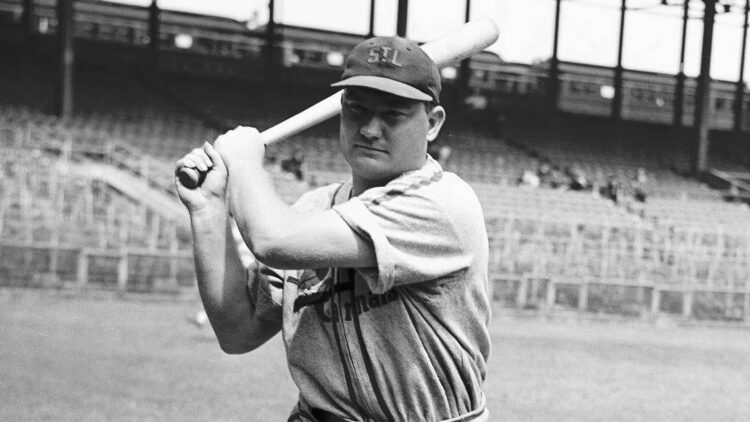
One of the cardinal rules of analysis is that you have to follow the data where it goes. One of the mistakes people make in science is that they go into a research question with the answer in their mind. If you did not read the article on the most valuable catcher of all time, it might be good to take a look. We will be using a similar method with first baseman. Of course, with catchers there was considerable debate over who is the most valuable. There is no such debate at first base.
We cannot force a debate on that front. What we can do is allow the data to steer us to a place where we can have an interesting discussion or comparison. In this case, we have a couple of first basemen that could go down as the least appreciated ever. Interestingly enough, their numbers are similar enough. This is especially true when we make a historical adjustment.
Johnny Mize missed three prime seasons fighting for his country in World War II. He was not unique in that regard, but his service just happened to be when he was on top of his game. We can estimate what he might have done over those three seasons by looking at the three seasons before he went into the service and the three years after. It would be reasonable to predict that he would have managed something in between those.
| SLASH | Hits | BB | HR | Runs | RBI | |
| Before | .312/.397/.564 | 497 | 212 | 85 | 275 | 347 |
| After | .309/.405/.585 | 466 | 230 | 113 | 317 | 330 |
| Composite | .311/.401/.575 | 482 | 221 | 99 | 296 | 340 |
Of course, this is pure guesswork and it is impossible to give someone credit for numbers they didn’t produce, but let’s go ahead and do it for fun. We will keep his career slash numbers the same to ease of comparison, but here we go with the Player A and B test. Mize will be one of them, but instead of his actual career numbers we will give him the extra counting ones he “earned” here.
| SLASH | Hits | BB | HR | Runs | RBI | |
| Player A | .312/.397/.562 | 2493 | 1077 | 458 | 1414 | 1677 |
| Player B | .297/.408/.540 | 2314 | 1401 | 449 | 1517 | 1529 |
Of course, these numbers have their limits. We don’t know anything about the era each one played in or their home ballparks. We don’t know anything about the quality of teams they played on. What we know is that the counting numbers are similar. Ironically both players are underappreciated in history because of what they didn’t do. They didn’t have 2500 hits, 500 home runs, or win a ton of batting titles. They just produced. Player A is Mize. Player B is Jeff Bagwell. Let’s now take a look at the top five first basemen from 1900 on. We are excluding active players for now.
Career Value
| BWAR | FWAR | WS/5 | Total | |
| Lou Gehrig | 114.1 | 116.3 | 97.8 | 328.2 |
| Jimmie Foxx | 93.9 | 101.8 | 87.0 | 282.7 |
| Jeff Bagwell | 79.9 | 80.2 | 77.4 | 237.5 |
| Frank Thomas | 73.8 | 72.1 | 81.0 | 226.9 |
| Johnny Mize | 71.3 | 68.6 | 67.6 | 207.5 |
Bagwell and Thomas were born on the exact same day. So, obviously the same historical connection is there that was true for Thomas Jefferson and John Adams. That’s too easy a comparison. Bagwell and Mize are far more similar as we saw with the counting numbers. That will be true when we break down these numbers to their component parts.
Thomas was arguably superior in the batter’s box. Unfortunately, that ceased to be the case once they all left the batter’s box. Bagwell was a better than average base stealer and those that watched him would argue he was even better than that when simply running the bases. The talking heads at ESPN were fond of saying that Thomas clogged the bases. The notion of course is silly on its face, but he was definitely a station to station base runner.
Mize wasn’t as fast or accomplished as Bagwell on the bases, but he comes closest in this group. The war also killed his career value, but when you look at the players in their peak you can see striking similarities in terms of value. This is where the various eras are taken out of the analysis and we can see how good they were without the benefit or curse of their era.
Peak Value
| BWAR | FWAR | WS/5 | Total | Index | |
| Gehrig | 91.1 | 92.7 | 76.0 | 259.8 | 588.0 |
| Foxx | 72.3 | 77.7 | 63.6 | 213.6 | 496.3 |
| Bagwell | 63.3 | 63.9 | 59.0 | 186.2 | 423.7 |
| Thomas | 56.5 | 57.2 | 58.8 | 172.5 | 399.3 |
| Mize | 65.5 | 62.5 | 59.2 | 187.2 | 394.7 |
Notice how close Bagwell and Mize are in peak value. This of course doesn’t include the three seasons we dummied up for him. The composite BWAR for those three seasons was 19.9 BWAR. If we simply add 55 index wins to his career value he would fall between Foxx and Bagwell in career value and likely would just eclipse Bagwell in peak value with those three seasons added.
I spent a ton of time in the book extolling the virtues of Bagwell and how underrated he is. That’s obviously still true, but Mize might be even more underrated. The BBWAA completely ignored him. So the Veteran’s Committee had to consider him. He was profiled in the first edition of the Hall of Fame Index, but he missed out in the current edition because Veterans Committee selections were eliminated.
Offensive Numbers
| OPS+ | Rbaser | OW% | wOBA | |
| Gehrig | 179 | -5 | .803 | .477 |
| Foxx | 163 | -9 | .780 | .460 |
| Mize | 158 | 10 | .766 | .433 |
| Thomas | 156 | -24 | .732 | .416 |
| Bagwell | 149 | 31 | .722 | .405 |
I neglected to mention that Gehrig had a higher peak index than the career values of all first basemen except Foxx. There are a number of lists of top players of all-time and polls for best hitter of all-time. He doesn’t get mentioned enough. He didn’t have the kind of top end seasons that Foxx did. But he was incredibly consistent.
The numbers here make a compelling case for the third spot for Mize. Of course, longevity concerns are there, but those weren’t his fault. Give him those three seasons and he would have had 13 very productive seasons. It’s amazing how that would have changed the way people looked at him. It would have been very similar to Bagwell and Thomas.
Like with the catchers, we will look at their offensive numbers over the course of their peak. This is something we didn’t do in the book. Simply put, we were answering a different question there. We wanted to test Hall of Fame fitness where here we are trying to rank order players. None of these guys are in doubt in terms of their Hall of Fame fitness.
| OPS+ | Rbaser | OW% | wOBA | |
| Gehrig | 191 | -14 | .820 | .491 |
| Foxx | 172 | -3 | .794 | .476 |
| Thomas | 170 | -5 | .759 | .436 |
| Mize | 169 | 13 | .796 | .448 |
| Bagwell | 160 | 29 | .740 | .422 |
As stupid as Gehrig’s numbers are, what is remarkable is that he really wasn’t that much worse outside of his peak. 1937 was a tremendously productive season for him, but fell outside of his peak. Obviously, some of this isn’t true. In particular, Thomas fell off a table following his peak. Bagwell had a few other productive seasons, but he also faded fast.
Mize’s peak is also vastly superior, but that is also a part of the misnomer. He would have had 13 productive seasons without missing those three seasons serving his country. The limitation of the offensive and fielding data is that it doesn’t tell us how long each player did it. However, it gives us a different dimension to grade the players on.
Fielding Numbers
| Rfield | DWAR | TZ1B | DWS/5 | |
| Bagwell | 54 | -7.2 | 58 | 6.5 |
| Foxx | 19 | =5.9 | 21 | 9.2 |
| Mize | 18 | -6.5 | 18 | 5.4 |
| Gehrig | 2 | -9.0 | 2 | 6.6 |
| Thomas | -65 | -22.5 | -67 | 1.4 |
The fielding data is interesting on so many levels. The first would be DWAR because at first blush it doesn’t make sense. How is Foxx more valuable than Bagwell when Bagwell was the better defender? Simply put, Foxx was more flexible because he also caught and played third base. Those are more demanding positions that bring more value. The same is true of Mize to a lesser extent.
The second interesting point is the debate of how to treat designated hitters. Thomas DHed late I his career. If you believe DWAR you would think it murders his value. Looking at defensive win shares is considerably different. When you take away four to five wins per platform you end up seeing a considerable bump to career value, but it isn’t insurmountable. It gives us a bit of a blueprint of how to treat designated hitters in the future.
| Rfield | DWAR | TZ1B | DWS/5 | |
| Bagwell | 45 | -3.9 | 42 | 4.6 |
| Foxx | 26 | -3.3 | 23 | 6.3 |
| Mize | 12 | -5.7 | 8 | 4.5 |
| Gehrig | 1 | -6.6 | 1 | 4.9 |
| Thomas | -65 | -15.5 | -65 | 1.3 |
Language matters, Surprisingly, my day job involves supporting English teachers with special education students. One of the hardest things to teach all students is the importance of precise language. This is no less true with analysis. Words like greatest, important, and valuable often get conflated. They mean different things. This came up when I got into an argument with a fellow baseball fan online.
He postulated that every position was equally valuable defensively. What he meant was that every position is important. Importance is an esoteric term. We can’t really put an exact value on importance. So, I feel comfortable in saying having a good fielding first baseman is important. Is it as important as a good fielding catcher, shortstop, or second baseman? No. This is where we move over to the idea of value. There is just no way to defend the notion that each position is equally valuable. Each position sees a different number of chances each game. Simple logic dictates that positions that see more chances will also be the most valuable.
This plays into the results we see above. It is certainly interesting that Bagwell is the best first baseman in the group. Heck, he might even be somewhat comparable to Keith Hernandez or Pete O’Bren. As interesting as the discussion might be, it’s not particularly relevant in determining the most valuable first baseman of all-time. That won’t be the same as other positions. First base is arguably one of the two or three least valuable defensive positions on the diamond.
Playoff Numbers
| PA | SLASH | HR | Runs | RBI | |
| Gehrig | 150 | .361/.483/.731 | 10 | 30 | 35 |
| Bagwell | 129 | .226/.364/.321 | 2 | 11 | 13 |
| Foxx | 73 | .344/.425/.609 | 4 | 11 | 11 |
| Thomas | 68 | .224/.441/.429 | 3 | 5 | 5 |
| Mize | 47 | .286/..362/.548 | 3 | 5 | 9 |
Numbers are numbers. We can handle them any way we want. As an Astros fan, I could make excuses for Bagwell. Both Bagwell and Thomas didn’t play on great teams in their career. The Astros best teams were arguably when Bagwell was already past his prime. Thomas never even played in a World Series. So, we could explain away their numbers by pointing out that pitchers pitched around them. The gap between their batting average and on base percentages would be evidence of that.
The other three all played on dynastic teams at some point in their career. Gehrig was lucky enough to play on two of them. So, their numbers were all good, but they also had a ton of support around them when they went to the World Series. Obviously, it’s hard to untangle reputation from real performance. Gehrig is a rare player that might be underrated even while being regarded as the greatest first baseman ever.
BWAR MVP Points
| Top 10 | Top 5 | MVP | PTS | |
| Gehrig | 0 | 8 | 4 | 80 |
| Foxx | 3 | 5 | 3 | 64 |
| Mize | 2 | 6 | 2 | 56 |
| Bagwell | 2 | 2 | 2 | 36 |
| Thomas | 2 | 4 | 0 | 26 |
There’s a math problem we can’t get around. When the first three played, there were only eight teams with eight regulars on each team. So, players had a one and six chance of being one of the top ten players in the league. In the modern game there are 15 teams. Thomas played in AL where each team had nine regulars. That would be 135 regular players. Obviously, finishing in the top ten is a lot more challenging in that format.
However, to give you an idea of how close Bagwell and Mize are historically, you need to check out one more stat that we like to call bases per out. Essentially, you take total bases, walks, stolen bases, and hit by pitches and divide by the total number of outs. Unfortunately, none of the sites we use calculate it, but it’s not difficult.
| TB | BB | SB | HBP | Outs | BPO | |
| Bagwell | 4213 | 1401 | 202 | 128 | 5887 | 1.010 |
| Mize | 3621 | 856 | 28 | 52 | 4557 | 1.000 |
Bagwell played in a better era for hitters but he also played more games in the Astrodome than in Minute Maid Park. Mize played at Sportsmark Park and Yankee Stadium which were slightly better for hitters. The end result might be a wash. Some locally would take Bagwell because of the fielding a base running, but it’s pretty darn close.


